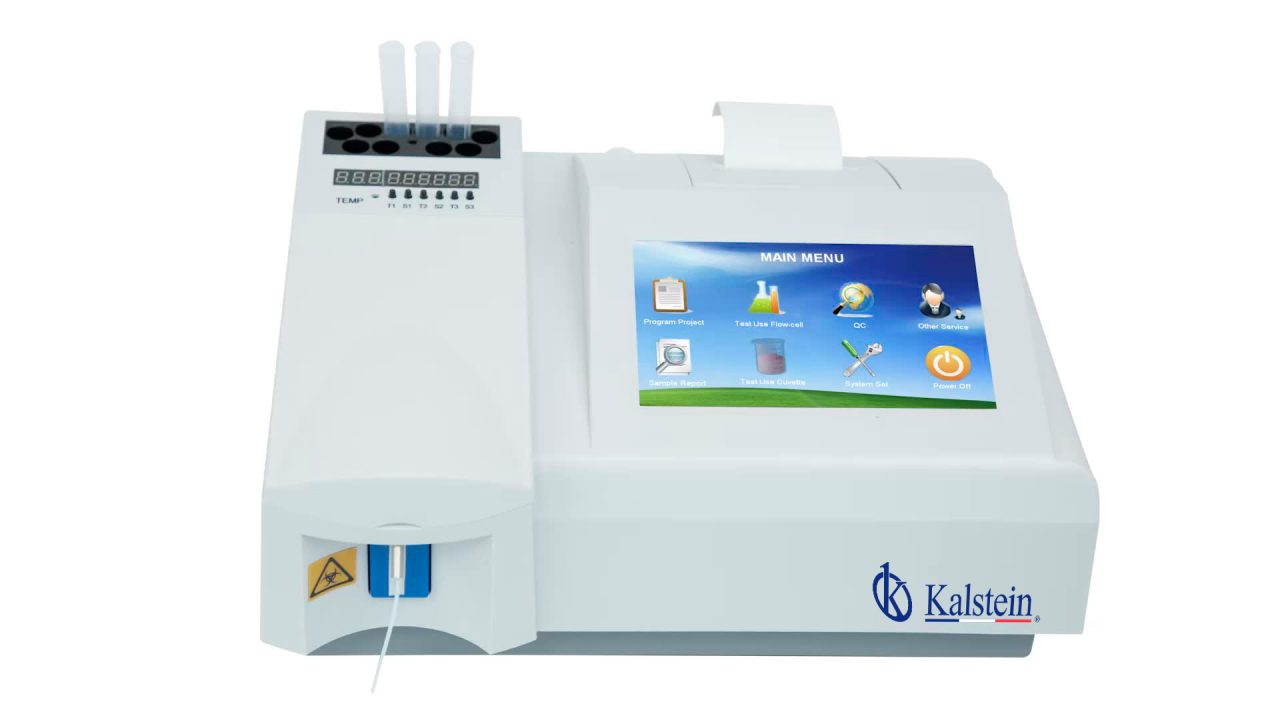A veterinary biochemistry analyser is a veterinary laboratory instrument used to carry out tests or determinations on samples from veterinary patients, among these samples we can mention blood serum, plasma, urine and other liquids of biological origin to detect the presence and concentration of analytes related to animal metabolism. These types of analyzers can be used in a wide variety of environments, including small veterinary clinics, research laboratories and high-performance veterinary laboratories.
Analytes commonly include enzymes, substrates, electrolytes, specific proteins, among others. The results provide veterinarians with information about renal, cardiac, and hepatic function.
What is veterinary biochemistry?
Veterinary biochemistry is responsible for studying the normal functioning of an animal organism from the molecular point of view through identifying the importance of biomolecules, bonds, water, vitamins, minerals and enzymes. The biochemical study serves to confirm some diagnosis, as well as to monitor the treatment and evolution of a disease.
It consists of the determination and reporting of the chemical components dissolved in the blood of the animal, since their study provides information to the doctor through a series of tests about the metabolism in the animal and the functioning of some organs.
What is the purpose of a veterinary biochemistry analyser?
The main function of these veterinary biochemistry analyzers is to provide information on the levels of parameters that help the veterinarian to know the liver, renal, pancreatic, cardiac, hormonal, immunological function, among others, in veterinary patients. The tests they include are commonly used studies, which aim to:
- Provide information on the health of the veterinary patient in general.
- Check the function of certain organs such as the kidneys, liver, and thyroid.
- Know the balance of electrolytes or salts in the blood such as sodium, potassium and chloride.
- Help diagnose multiple diseases.
- To verify how some treatments affect certain organs of the animal.
- Monitor various diseases affecting animals.
What are the measurement methods of a veterinary biochemistry analyser?
Several analytical measurement methods using these instruments are available. They are usually divided into two categories:
- Optical techniques: among which we find colorimetry considered the most common method, the sample is mixed with the appropriate reagent to produce a reaction that results in a color, and the concentration of the analyte determines the intensity of the color obtained. The other technique is photometry where a light is projected onto the sample at an appropriate wavelength, while a photodetector, located on the other side of the sample, measures the amount of light absorbed. It is directly related to the concentration of the analyte in the sample. The principles used are: absorbance, turbidimetry, and fluorescence.
- Electrochemical techniques: Through direct potentiometry where selective ion electrodes (ISE) are used for the determination of ions in samples and also indirect potentiometry. Although it is important to note that a biochemistry analyser can offer several measurement principles.
How to choose the right veterinary biochemical analyser?
The choice of veterinary biochemical analyser will depend on the types of tests to be carried out and the performance required in the veterinary laboratory or clinic.
Other important factors to consider are sample handling, degree of automation, data management, operating costs, occupied space, and whether the instrument can handle microvolume samples.
What does Kalstein offer you?
Kalstein is a manufacturer of medical and laboratory equipment of the highest quality and the best technology at the best PRICES in the market, so you can make your PURCHASE confidently with us, knowing that you have the service and advice of a company specialized in the field and committed to provide you with safe, economical and effective options to perform your functions in the right way. This time we present our Chemistry Analyser a new device extremely useful in any veterinary clinic, among its main features we find: HERE
- 5-inch color LCD, touch screen
- Compatible with bucket and flow cell test mode.
- Real-time curve display.
- 5 wavelengths, 80 pre-programmed test elements.
- Memory for 10000 sample results.
- Light source hibernation function extends life.
- RS232 interface, PC connection.
For more information we invite you to take a look at:HERE




